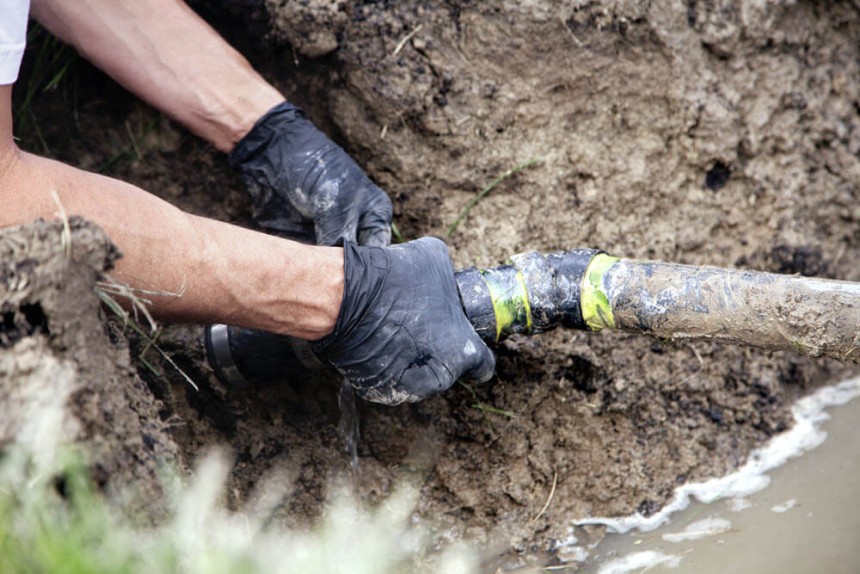
How Pitch Fibre Drains Affect Property’s Drainage System
Learn how pitch fibre drains affect your property’s drainage system. Discover common issues, long-term impacts, and solutions to ensure efficient water flow.
2024-11-19 12:43:11 - James Clark
Pitch fibre drains, once a popular choice for drainage systems, are now a cause of concern for many property owners. These pipes, made from a mix of wood pulp and bitumen, were widely used in the mid-20th century due to their affordability and ease of installation. However, over time, they have proven to be less durable than modern alternatives, leading to various drainage issues. If you’re dealing with pitch fibre drains in Crawley, it’s essential to understand how they affect your property and what can be done to resolve potential problems.
Here, we’ll explore the impact of pitch fibre drains on your drainage system, common issues, and how to address them effectively.
1. What Are Pitch Fibre Drains?Pitch fibre drains are pipes made from wood cellulose fibers soaked in bitumen. This combination was meant to create a lightweight, cost-effective, and easy-to-install drainage solution.
Although these pipes were considered innovative at the time, they were not designed to withstand prolonged exposure to water and pressure. As a result, many properties with pitch fibre drains experience issues as the pipes degrade over time.
2. Why Were Pitch Fibre Drains Popular?Pitch fibre drains gained popularity in the 1950s to 1970s due to their low manufacturing and installation costs. Builders used them extensively for residential and commercial drainage systems, as they were easier to handle and install compared to traditional clay or cast iron pipes.
Despite their initial appeal, these pipes have significant long-term drawbacks, which have become more apparent as properties age.
3. Common Issues with Pitch Fibre DrainsThe material properties of pitch fibre drains make them vulnerable to several issues. Here are the most common problems property owners face:
Cracking and DeformationOver time, pitch fibre pipes can become brittle and start to crack. Prolonged exposure to moisture causes the bitumen to soften, leading to pipe deformation and blockages.
Collapsing PipesAs the pipes weaken, they may collapse under the weight of the surrounding soil or from pressure inside the drainage system. Collapsed pipes disrupt water flow and can lead to serious drainage failures.
Tree Root IntrusionPitch fibre pipes are more susceptible to tree root intrusion than modern materials like PVC. Roots can penetrate the soft bitumen material, causing blockages and further weakening the pipes.
BlockagesDue to their irregular internal surfaces caused by deformation, pitch fibre drains are more prone to collecting debris and developing blockages, which can lead to slow drainage and foul odors.
4. How Pitch Fibre Drains Affect Your PropertyThe issues associated with pitch fibre drains can have several negative effects on your property, including:
Poor Drainage EfficiencyDegraded or collapsed pipes reduce the efficiency of your drainage system, leading to slow water flow or frequent backups.
Increased Maintenance CostsThe frequent need for unblocking, repairs, or even emergency callouts can increase the cost of maintaining a drainage system with pitch fibre pipes.
Structural Damage RisksLeaks or collapsed pipes can cause water to seep into the surrounding soil, potentially leading to ground instability or damage to your property’s foundation.
Health HazardsPoor drainage often leads to stagnant water, which can attract pests and create foul odors. In severe cases, it may pose a health risk to occupants.
5. How to Identify Pitch Fibre Drains on Your PropertyIf your property was built between the 1950s and 1970s, there’s a good chance it has pitch fibre drains. Here are some signs to look out for:
- Slow-draining water or frequent backups.
- Foul odors emanating from drains.
- Gurgling sounds in pipes.
- Soggy patches or water pooling in your yard.
- Visible deformations or cracks in exposed pipe sections.
A professional inspection can confirm whether your property has pitch fibre drains and assess their condition.
6. Maintenance Tips for Pitch Fibre DrainsIf you have pitch fibre drains, regular maintenance is essential to prolong their lifespan and minimize problems.
Routine InspectionsSchedule regular professional inspections to monitor the condition of your drains and identify potential issues early.
Clearing BlockagesHigh-pressure water jetting or rodding can help clear blockages and maintain proper water flow in your drainage system.
Preventing Root IntrusionInstall root barriers or regularly inspect areas near trees to prevent roots from invading your pipes.
7. Repairing Pitch Fibre DrainsIn some cases, minor issues with pitch fibre drains can be resolved with repairs rather than full replacement. Common repair methods include:
Relining PipesA resin-based liner can be inserted into the existing pipe to create a smooth, durable internal surface, sealing cracks and improving water flow.
Patch RepairsFor localized damage, a patch repair can reinforce the pipe and restore its functionality without replacing the entire section.
8. Replacing Pitch Fibre DrainsWhen pitch fibre drains are severely damaged or beyond repair, replacement is the best solution. Modern materials like PVC or HDPE provide a longer-lasting and more reliable alternative.
Excavation and ReplacementThis involves digging up the damaged pipes and replacing them with new ones. Although labor-intensive, it ensures a complete upgrade to your drainage system.
Trenchless MethodsIn some cases, trenchless pipe replacement techniques can be used to minimize disruption, such as pipe bursting or slip lining.
9. Benefits of Upgrading to Modern PipesReplacing pitch fibre drains with modern materials offers numerous benefits, including:
- Enhanced durability and longevity.
- Improved drainage efficiency and water flow.
- Reduced risk of blockages and root intrusion.
- Lower maintenance costs over time.
Dealing with pitch fibre drains can be complex and challenging. It’s always best to seek professional help for inspections, repairs, or replacements. Qualified drainage experts have the tools and expertise to handle these issues efficiently and effectively.
